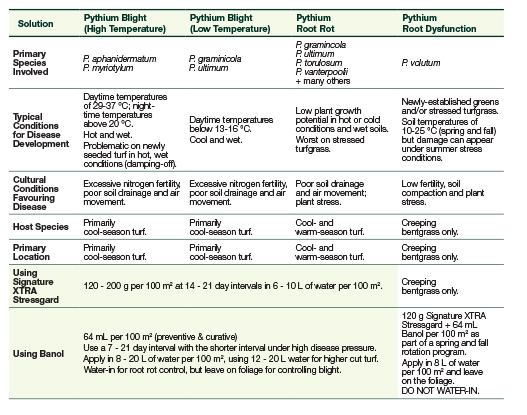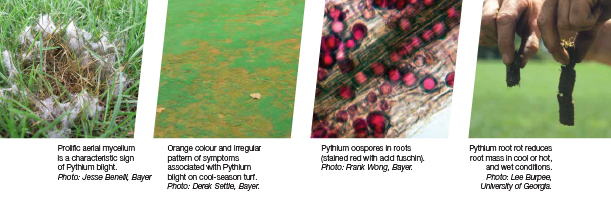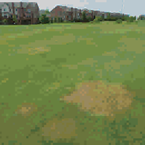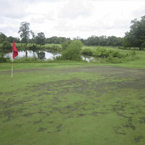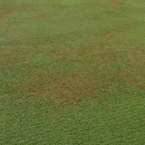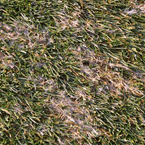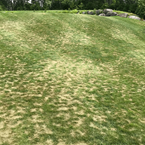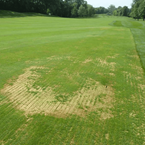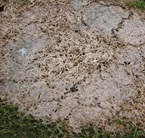Pythium - Foliar Blight
Classification
// The Problem
Pythium turf diseases cause real problems for golf course superintendents. Four major diseases are caused by various Pythium species: high and low temperature blights, root rot and root dysfunction. Signature Stressgard and Banol are effective fungicides for all Pythium diseases. Resistance has not been an issue for either fungicide after more than 20 years of commercial use, making them reliable choices for Pythium control.
// What to Look For
Pythium Blight. Symptoms appear as sunken, greasy black patches and streaks on turf that can take on an orange to dark grey colour. Affected turf is often matted and has a water-soaked appearance. White, cottony mycelium is typically present in the early morning. Blight can kill turf in 24-48 hours and preventive measures are key for controlling this disease. Different species cause blights at low or high temperatures, but high humidity or leaf wetness are commonly needed for disease to develop.
Pythium Root Rot. Affected turf can show irregular chlorotic, yellow or orangish patches or streaks, or thinned areas of turf. No foliar mycelium is produced, but roots may appear water-soaked and rotted or show a significant reduction in mass or root hair production. Microscopic diagnosis may be needed to detect Pythium infestations in roots. Root rot can occur in cool or hot conditions, and is especially active when soil is wet and plants are stressed.
Pythium Root Dysfunction. This disease is caused by Pythium volutum and is seen primarily on creeping bentgrass that is under stress. Infections take place in the spring and fall, reducing root growth, but symptoms can appear later when plants are under stress. Affected areas are patches up to 0.5-0.75 m in size that show wilt or decline and can turn orange or brown. Root mass and root hairs are greatly reduced, and plants tend to collapse under high temperature conditions. Microscopic diagnosis is required to confirm the presence of P. volutum in roots.
// Envu Solutions
All of these Pythium diseases require different management approaches. Prevention is a common key for all of these diseases as they tend to occur when the turf has poor chances for recovery.
Signature Stressgard provides excellent preventive activity against Pythium diseases. Since it is fully systemic, there is no need to water in applications. Signature Stressgard has unique Stressgard Formulation Technology and should be used as part of a seasonal disease control and plant health program.
Banol has reliable preventive and curative activity. For Pythium blight, applications need to be targeted on to the foliage and crowns; for Pythium root rot, the application needs to be watered into the upper root zone to be most effective.
For Pythium root dysfunction, Signature Stressgard and Banol should be combined in a spring and fall rotation program.
// Resources

